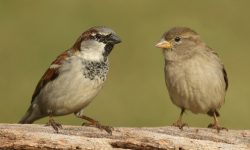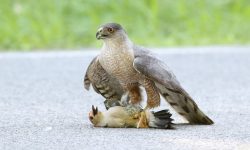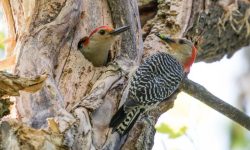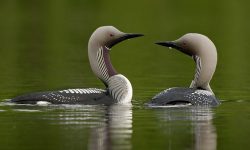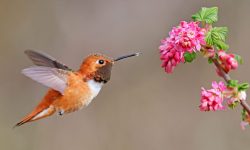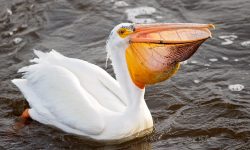Ducks are among the most recognizable birds globally, famous for their unique quacking and waddling movements. While many of us have enjoyed feeding ducks with bread at a local pond, there’s much more to their diet than meets the eye.
What do ducks eat in the wild, captivity, and urban environments? This question sparks curiosity and provides important insights into their ecological role. For pet owners and conservationists, understanding a duck’s diet can help with proper care.
In this guide, we’ll explore some surprising facts about what ducks eat and how their feeding habits vary depending on their environment.
General Overview of Duck Diets
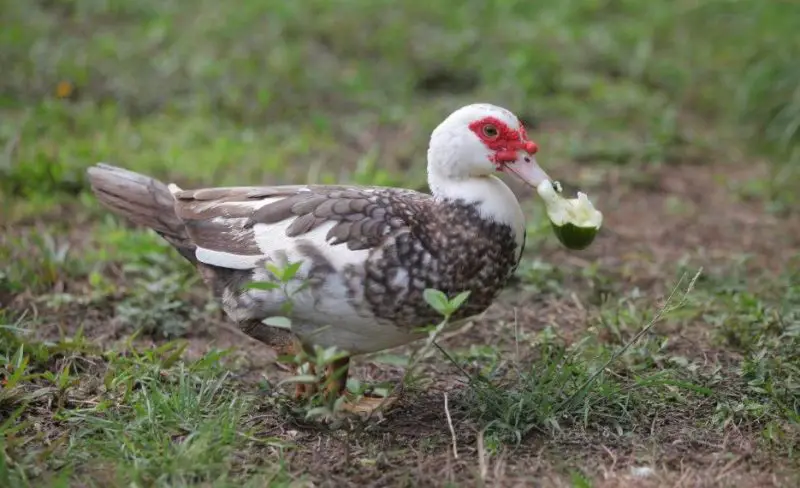
Ducks are omnivores, which means they eat a wide variety of foods. Their diet typically includes both plant and animal matter. What ducks eat depends on their environment and what is readily available to them. Ducks are opportunistic feeders, meaning they take advantage of whatever food sources they encounter, whether that’s insects, plants, small fish, or even human leftovers.
What Ducks Eat in the Wild
In the wild, ducks have access to a more natural and diverse range of food sources compared to those kept in captivity. Their diet is largely shaped by their environment, the season, and what is readily available. Ducks are excellent foragers, adept at diving beneath the water’s surface, sifting through vegetation, and searching through the mud for their meals.
Aquatic Plants
One of the most important food sources for wild ducks is aquatic plants, which offer both nutrition and easy access. Water lilies are a significant part of their diet, providing both stems and leaves that are rich in essential nutrients. Ducks are also known to feed on algae that thrive in stagnant or slow-moving waters, common in wetland areas. Additionally, duckweed, a tiny floating plant, is a staple food for many waterfowl due to its abundance and ease of access.
Insects and Small Animals
Ducks also rely on animal-based foods, which provide them with the protein necessary for growth and energy. Insects, such as dragonflies, beetles, and other small aquatic insects, are commonly consumed, especially during the warmer months when they are plentiful. Ducks will also dive into the water to catch small fish, tadpoles, or frogs, contributing to their protein intake. Moreover, ducks forage in mud and wetland areas for worms and snails, both of which are vital sources of protein that sustain them.
Seeds and Grains
While aquatic foods are crucial, ducks also forage on land for seeds and grains, particularly in areas close to agricultural fields. Ducks often feed on leftover crops, especially wheat, corn, oats, and barley. During the fall, they are seen picking through fields to gather seeds from grasses, plants, and weeds. This helps them build up the energy reserves needed for the colder months ahead. In addition to their normal foraging, the availability of seeds and grains significantly enhances their ability to survive the winter.
What Do Ducks Eat in Urban and Suburban Areas?
Urban ducks have become increasingly adept at surviving in human-dominated environments. Found in city parks, ponds, or even on busy streets, these ducks have adapted to the availability of both natural and human-provided food sources. As human development has expanded, so has the diversity of food accessible to ducks. While they still forage for natural foods, urban ducks often take advantage of the easy-to-access human food that is plentiful in these areas.
Human Food Scraps
One of the most noticeable changes in the diet of urban ducks is their reliance on human food scraps. Ducks in urban environments will scavenge from public places, including parks, streets, and picnic areas. The most common foods ducks consume from human sources include:
-
Bread: Though a popular food people toss to ducks, bread is not a healthy option. It lacks the necessary nutrients for ducks and can cause malnutrition if consumed in large quantities.
-
Crackers and chips: Ducks can often be seen picking up crumbs from snacks like crackers or chips left behind by humans.
-
French fries and pizza crusts: Ducks tend to raid fast food areas or picnic spots, where they may indulge in greasy foods like French fries and pizza crusts.
Although ducks may enjoy these food scraps, it’s important to note that feeding ducks human food, especially bread, can be harmful. These foods lack essential nutrients and can lead to digestive issues, malnutrition, and other health problems for ducks.
Seeds and Grains
In addition to scavenging human food, urban ducks also benefit from natural food sources that are easy to access in these areas. They will often forage for:
-
Bird feeders: Ducks are known to feed on seeds intended for other birds, particularly in urban parks or residential areas where bird feeders are common.
-
Agricultural waste: In suburban areas, ducks may wander into fields where they can eat leftover grains like corn or wheat from nearby crops. This not only provides them with nutrition but also helps them maintain the energy needed for survival.
By taking advantage of both human food scraps and natural food sources, urban ducks have become highly adaptable to life in cities and suburbs. However, it remains important for people to provide ducks with more nutritious options when feeding them, ensuring their health and well-being.
What Do Ducks Eat in Captivity?
Ducks that live in captivity, whether as pets or on farms, have access to a controlled and balanced diet that ensures their health and well-being. Unlike wild ducks, which forage for food in their natural environments, pet ducks and farm ducks rely on specific feed that provides them with the right nutrients. Their diet typically includes a mix of commercial duck feed, vegetables, fruits, and protein sources.
Commercial Duck Feed
For pet ducks, the best option is commercial feed specifically formulated for waterfowl. This feed is designed to meet the nutritional needs of ducks and is often available in pellet or crumble form. The primary benefits of commercial duck feed include:
-
Proteins: These are essential for growth and maintaining a healthy body. Proteins in duck feed often come from fish meal, soy, or corn. These ingredients provide the necessary amino acids that ducks need for muscle development and overall health.
-
Vitamins and minerals: A properly formulated duck feed contains a balance of vitamins and minerals, including calcium for strong bones and eggshells, as well as other nutrients that support healthy feathers, immune function, and overall vitality.
Commercial feed helps ensure that ducks receive a balanced diet that might not always be achievable with just fruits, vegetables, and protein snacks alone.
Vegetables and Fruits
Along with their commercial feed, ducks in captivity can enjoy a variety of vegetables and fruits that are both nutritious and tasty. Some excellent options for pet ducks include:
-
Leafy greens: Ducks enjoy spinach, kale, and lettuce, all of which are rich in vitamins and minerals. These greens are easy to digest and provide ducks with a refreshing source of hydration.
-
Carrots and peas: These vegetables are great for adding extra fiber to their diet. Carrots are also a source of vitamin A, which is beneficial for a duck’s vision and immune health.
-
Berries and apples: Ducks love sweet fruits like strawberries, blueberries, and apples. These fruits provide antioxidants and vitamins that support their overall health. However, it’s important to remove seeds from fruits like apples, as they can be toxic to ducks in large quantities.
These fruits and vegetables serve as both snacks and supplements to their primary feed, contributing to a well-rounded diet.
Protein Sources
In addition to vegetables and fruits, ducks require adequate protein to maintain muscle mass, health, and reproductive function. In captivity, ducks can be provided with protein-rich treats such as:
-
Mealworms: A high-protein snack, mealworms are a great way to supplement a duck’s diet. They are packed with essential fatty acids, vitamins, and minerals that support growth and health.
-
Crickets and worms: Ducks love crunchy protein sources like crickets and worms. These are natural treats that can be added to their diet to provide them with the necessary protein and nutrients for muscle development and energy.
Incorporating these protein sources ensures that ducks in captivity receive the right amount of essential nutrients to maintain their health, especially for growing ducks, laying females, or active ducks that need extra energy.
Seasonal Changes in Duck Diets
Ducks’ diets vary significantly throughout the year, adapting to the changing availability of food. Their feeding habits align with seasonal shifts, as they adjust their nutrition to meet the demands of breeding, migration, and colder weather. Whether in the wild, urban, or suburban areas, ducks modify their diets to make the most of what’s accessible during each season.
Spring and Summer
During the warmer months, ducks primarily focus on high-protein foods, which are crucial for breeding and rearing ducklings. Some of the foods ducks commonly feed on in spring and summer include:
-
Insects: With the abundance of insects in the warmer weather, ducks often forage for dragonflies, beetles, and other small insects. These provide a valuable source of protein necessary for growth and reproduction.
-
Aquatic plants: As ponds, lakes, and marshes warm up, aquatic vegetation flourishes, providing ducks with easy-to-access food. They consume plants like water lilies, duckweed, and algae, which offer essential nutrients.
-
Fish and tadpoles: Small fish and tadpoles become more abundant in the warmer weather, making them an important protein source for ducks. Ducks dive beneath the water’s surface to catch these aquatic creatures.
The spring and summer months are essential for ducks to store energy and care for their young, and their diet reflects the need for high protein to support this process.
Fall and Winter
As the weather cools down and food sources become scarcer, ducks shift their diet to focus on foods that provide energy and can sustain them through the colder months. Their winter diet typically includes:
-
Grains and seeds: As many plants die off or stop producing in the fall, ducks often forage for grains and seeds. These foods provide necessary carbohydrates and fats that help ducks maintain energy during the colder months.
-
Nuts: In regions with nut-bearing trees, ducks will feast on fallen nuts such as acorns. Nuts are an excellent source of fats, which are vital for insulation and energy, especially as ducks prepare for the harsh winter.
-
Scavenging: When natural food becomes less abundant, ducks often turn to scavenging, particularly for human food scraps. Urban and suburban ducks are skilled at finding leftovers in parks, streets, and picnic areas, where they can find bread, crackers, and other discarded food.
During the fall and winter, ducks rely more on high-calorie foods to keep them warm and nourished through the colder months. The diet shift ensures they have the necessary energy to endure migration or survive in colder climates.
Why Do Ducks Eat What They Do?
The foods ducks consume are influenced by their biology, behavior, and adaptability to different environments. As opportunistic feeders, ducks have evolved to take advantage of a wide range of food sources, which ensures they can thrive in diverse habitats—from wetlands and lakes to urban settings. Their foraging habits and diet are key to their survival, allowing them to meet their nutritional needs throughout the year.
Ducks’ Digestive System
Ducks are equipped with a specialized digestive system that enables them to process a variety of food types efficiently. This system includes unique adaptations that help them derive the maximum nutrition from their diverse diet:
-
The gizzard: Ducks have a muscular gizzard that aids in grinding up tough food, such as seeds, grains, and other plant materials. This mechanical digestion is especially important since ducks do not have teeth to break down food in the way mammals do.
-
Water intake: Ducks often ingest water along with their food, which assists in the digestion process. The water helps to flush out any unwanted particles and allows ducks to filter out nutrients from their food more effectively. This also helps ducks avoid ingesting harmful substances that might be present in their food.
This efficient digestive system allows ducks to thrive on an eclectic mix of plant-based and animal-based foods, giving them the flexibility to adapt to whatever food sources are available in their environment.
Ducks and Their Ecological Role
Ducks aren’t just consumers of food; they also play an important ecological role in the environments they inhabit. Through their foraging and feeding behaviors, ducks help maintain balance in local ecosystems. Here are some of the key ecological roles ducks perform:
-
Controlling insect populations: Ducks are highly effective in controlling insect populations, particularly in wetland areas. By consuming insects, larvae, and other small creatures, ducks help keep these populations in check, preventing overgrowth that could disrupt the local ecosystem.
-
Seed spreading: Ducks contribute to the dispersal of seeds through their droppings, which helps to promote the growth of plants in different areas. This seed spreading can encourage plant diversity and contribute to the health of the ecosystem.
-
Maintaining plant life: Ducks are known to eat a variety of aquatic plants, which helps prevent overgrowth and ensures that plant communities remain balanced. By feeding on these plants, they also aid in the circulation of nutrients in aquatic ecosystems, promoting a healthy environment for other species.
-
Scavenging and decomposition: Ducks’ scavenging habits play a vital role in the decomposition process. By consuming decaying organic matter, including carrion and leftover food scraps, ducks help clean up their environment and contribute to the natural recycling of nutrients. Their foraging behavior aids in breaking down organic materials that would otherwise accumulate, supporting healthier ecosystems.
Ducks’ versatile diets and behaviors not only help them survive but also contribute to the overall health and balance of their ecosystems. Their role as both consumers and recyclers in nature highlights the importance of preserving their habitats for future generations.
Conclusion: What Do Ducks Eat?
Ducks have a fascinating and diverse diet that helps them thrive in various environments. Whether in the wild, urban areas, or captivity, ducks are adaptable and opportunistic feeders. They consume a wide range of foods, from aquatic plants and insects to grains and human food scraps, depending on what’s available.
Understanding what ducks eat is essential for anyone who interacts with them—whether you’re observing them in the wild, caring for a pet duck, or managing duck populations in urban areas. By providing ducks with appropriate and nutritious food, we can ensure their well-being and support their role in the ecosystem.

